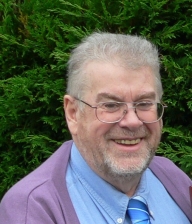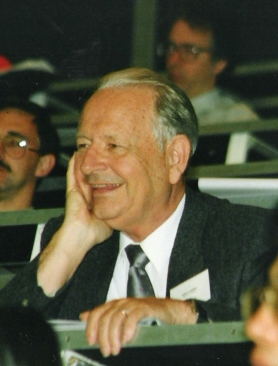My First Meeting with Karl
Contributed by Ian Cowe

I first met Karl in 1979 when I was sent to the US by the Scottish Plant Breeding Institute to visit Technicon and Neotec, the only two manufacturers of NIR scanning instruments at that time.
We had become interested in NIR in 1978 after I attended a lecture in Edinburgh given by Phil Williams. I was fascinated with the work Phil had done with Karl and could see how NIR could be used in plant breeding. We acquired a fixed filter instrument and tested it on barley protein and moisture with some success. We did however, find there were about 4% of samples which appeared as outliers. In plant breeding this was tolerable as the main objective is to identify the best and breed the next generation only from these.
The following year we decided to buy a scanning instrument to look at cereal and forage crops.
I wrote to Karl explaining what we planned and was invited to visit his lab for a couple of days during my trip. When I arrived he put me at ease, showed me his scanning instrument and patiently explained how he analysed the spectra. The use of derivatives and, particularly the optimization of segments and gaps, was completely new to me and, while I was familiar with Multiple Linear Regression, I realised there was much more to NIR than I had imagined. To make this work I would need to improve my computing and statistical skills.
The thing that impressed me about Karl was that he appeared more interested in what my plans were than he was in recounting his many achievements. He was one of the nicest people I have ever met.
Over the next 30 odd years we met regularly at Chambersburg and at International conferences. My main interest became data analysis and while Karl was the master of derivative calibrations I could never reconcile the fact that changing one or two samples in a calibration set could change the wavelengths selected and therefore the equations that were produced. When computers improved we adopted Principal Components Analysis as an alternative.
Karl never really embraced methods based on PCA or Partial Least Squares but when we met we spent many hours discussing the diagnostic methods these provided.
Spotted in the audience!
Karl enjoying a lecture at NIR91 in Aberdeen

Karl's contribution to NIR spectroscopy was not only that he initiated the technique but that he continued producing the highest quality work for so long. When I first met Karl in 1979 he was 58, and in Europe would be approaching retirement age. When I retired in 2007 he was still going strong.
It was a pleasure knowing you Karl. We owe you so much.
Ian A. Cowe





